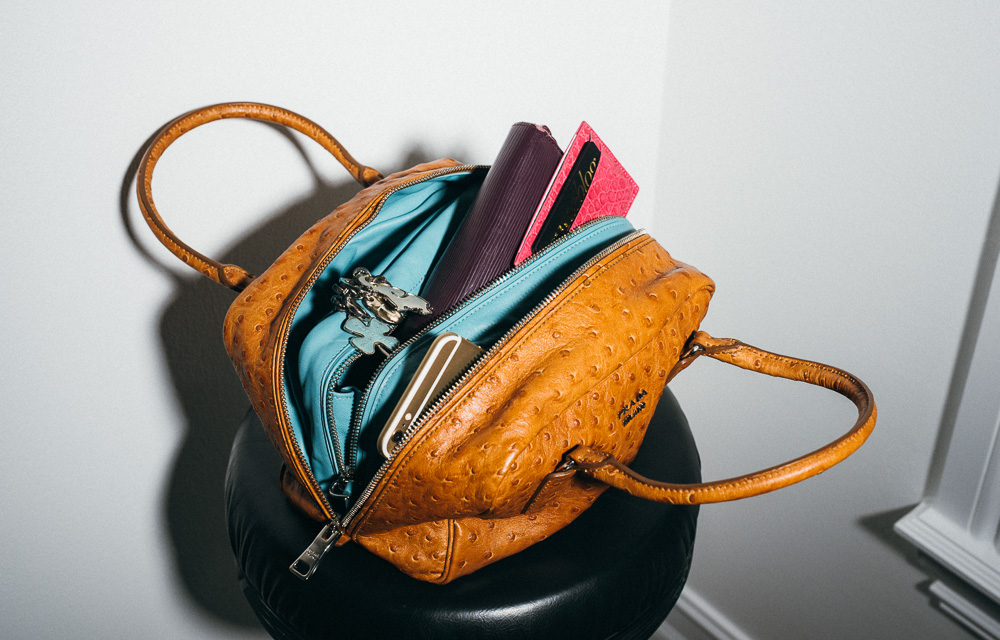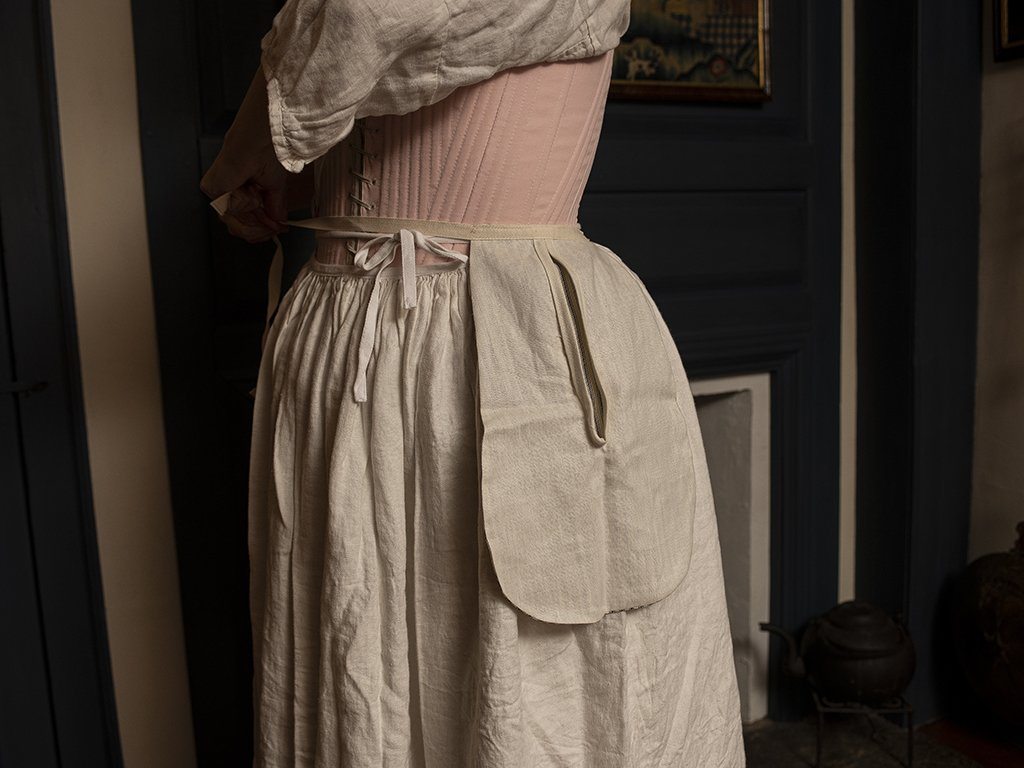The Women’s Pocket Conspiracy

By Charlie Elizabeth Culverhouse
It’s guaranteed that if you compliment anyone other than a man on their outfit, they will excitedly point out, “it has pockets!!”.
When buying from the women’s section, pockets are somewhat of a rarity. Perhaps, in the grand scheme of things, it may seem trivial for pockets to be such a focus of women’s inequality, but in 2021, in an era of artificial intelligence, phones that do everything short of getting us to the moon, and with a robot on mars, we still can’t get a decent pocket in feminine clothing.
On average, the pockets in women’s jeans are 48% shorter and 6.5% narrower than men’s pockets. As phones get bigger, it’s a sure thing that men’s pockets will grow to fit the practical need of carrying the device. But women’s pockets continue to get smaller if they’re even there at all! But why? Why can’t women’s clothes just have pockets? Christian Dior explained the phenomenon in 1954 with the words “Men have pockets to keep things in, women for decoration”. Fast forward 70 years and we still have come no further in the fight for pockets!
The pocket argument goes back a lot further than Christian Dior’s pocket-less runways. The history of the woman’s pocket is incredibly political and signifies the freedom and independence women throughout history have fought for.
In the Middle Ages, all genders were pocket-less. People would carry their essentials around in pouches that were slung from rope. The pouches were simple and allowed quick access for money and other essentials. Though they weren’t sewn into clothing, pouches were a hands free affair. Pockets were attached to a belt which would be secured around the waist. Men’s clothing designs meant they had to secure their belts on the outside of their clothing, showing their pouches to the world. Meanwhile, women often chose to wear their pouches beneath their skirts like a stealth fanny pack, which could be accessed through slits in the outer layer of their dress.
These pockets, unlike today, were huge and practical. Despite the pouches being hidden, they were beautifully decorated with embroidery and embellishments, much like handbags are today. Again nodding to the modern handbag, each woman had her own system for organizing items inside her pockets to ensure the pouch didn’t disturb her outfit or become uncomfortable.

Then, sometime in the 17th century, the grand idea of sewing these belted pouches right into your clothes came along to replace the Middle Ages bum-bag. For men, this gave them easily accessible pockets sewn straight into the linings of their coats, waistcoats and breeches – the modern day pocket was born.
But women still had to rely on having separate pockets that sat underneath their petticoats, leaving them to essentially undress to access the contents. Maybe they could carry personal items around with them, but they couldn’t get them out in public – thus, the inequality of pockets begins.
At the turn of the 18th century, the women’s pocket began to disappear as figure hugging dresses became the style of choice. Women’s once hidden pockets didn’t work alongside the new silhouette and were scrapped in favour of small decorative bags, called reticles. These tiny handbags essentially personified the fact that women of this time had next to no access to money or property and therefore didn’t need a functional pocket – because what do they own to put in said pocket? Women’s pockets disappeared because they had their big, strong, money-earning, property-owning husbands to carry, and control, all of their necessities for them.
At the turn of the 20th century, however, women were done and rebellion was ripe. As women increasingly sought independence, pockets were a centre of striking back and instruction manuals on how to sew pockets into your skirts became more and more popular. Campaigns led by the Rational Dress Society in the 1800’s had been fighting for functional women’s clothing and in 1910 the ‘Suffragette Suit’, which boasted no less than six pockets, became the popular choice of dress for feminists.
During WWII women were awarded functional clothing with pockets, not solely thanks to their years of campaigning, but, in short, because they were now having to work jobs previously done only by men. So that’s it. That’s how we got pockets. But don’t get too comfortable – we don’t get them for long. The minute that men came back from war, they got their jobs back, and while some say women were awarded for stepping up in time of need, the patriarchy struck again and post-war women were back to where they were a couple years ago.
These post-war women were expected to exude femininity and shed the masculine, practical styles they had been wearing while the men were away. Women’s clothing, much like it had done in the 17th century, became slimmer to show off the ‘feminine’ figure – which relegated the pocket to yet-again a man’s object.
As the economy wobbled back onto its feet post-war, the handbag industry began to grow. The logic is unsurprising and easy to figure out. Take away women’s pockets and they need handbags!

So now we get to the pocket conspiracy. The argument goes; if you have pockets, you won’t buy handbags. When it comes down to it, the fashion industry is a multi-billion pound affair and while fashion is about artistry and innovation, it’s also about making money – a whole lot of it. The global handbag market is estimated to be worth a whopping $47 billion and all they had to do to make that money was design handbags to match their gorgeous, pocketless clothes.
The pocket conspiracy is well documented and it’s also not a huge issue for many people. Lots of people love carrying around handbags and matching different styles of bag to their outfits. But there are more pressing issues than simple storage when we talk about the issue of women and pocketless clothing.
For one, bags can cost an absolute fortune; Birkin’s for example retail for an average price of $40,000 – $60,000! Costing an arm and a leg also comes in the more literal sense as bags can do serious harm to the body. Most handbags sit on the trapezius muscle right on top of the shoulder, and stress to this area from a heavy handbag can tighten muscles in the shoulder, neck and back – sometimes even causing chronic pain.
Replacing pockets with bags also means we carry more items – often more than we need. Especially in the 2010’s when oversized bags were all the rage, it would look and feel weird to hold a bag with just a phone and lip balm at the bottom. So we carry around unnecessary items, with less money to spend, because we’ve spent it all on the bag, and men waltz around with all the pocket space they need.

The underlying factor that fuels women’s pocketless rage, is that women have nearly no say in fixing the problem. While over 85% of graduating majors from top fashion schools are female, only about 14% of the top 50 major fashion brands are run by women. Even with females in leadership positions, most of the creative director roles at major fashion brands are held by men, meaning they have control of the designs!
Fashion has always been, and continues to be, a male-dominated business even with more women graduating with a fashion education than men. In an industry where women spend nearly 230% more than their male counterparts, men still hold the majority of power. And, as Christian Dior showed us 70 years ago, male designers prioritise the aesthetic they wish women to wear, instead of giving them what they want – and what they want is pockets!
Discover more from GUAP’s Fashion section here

